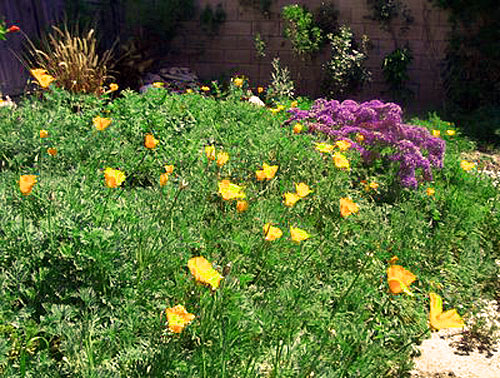Ocean-friendly gardening starts here
February 6, 2012
Malibu made a prizewinning environmental “cleaning machine” out of a vacant lot that had been the community’s annual chili cook-off site. You don’t need to own a spread like Legacy Park, though, to help curb urban run-off.
Paul Herzog, coordinator of the Surfrider Foundation’s Ocean-Friendly Gardens Program, recommends “CPR”—conservation of water, permeability in your soil and retention devices such as rain barrels and rain gardens—to homeowners who would like to build water cleanliness into their landscaping.
And even small changes can help. Here are few:
Apply mulch. “It’s a simple thing to do, and it makes a big difference,” says Herzog. “Some areas even offer mulch from the city for free.” Mulching keeps weeds down, and, more importantly for the oceans, captures and holds water that might otherwise make its way down to the beach.
Redirect your rain gutter onto your landscape. Don’t let water wash over your roof and then send it directly into a storm drain. Turn your downspout or, if necessary, buy an attachment at the hardware store to send that water onto your lawn or garden, where it’ll do more good.
Reset your irrigation timers when you reset your clocks. You know how you spring forward and fall back for Daylight Savings Time? Well when you reset your clocks in the fall, adjust your irrigation to account for the rainier winter weather. And when spring arrives, set them again for the drier summer days.
Go native. Think about what naturally grows here the next time you landscape. Native plants don’t have to be dull. (Click here for ideas.) “Monarch butterflies journey from Canada to Mexico and there’s only one plant that baby Monarchs will feed on,” he says. “Milkweed. And some varieties are native to this place.”
Posted 2/6/12













 405 bridge work causes a stink
405 bridge work causes a stink
